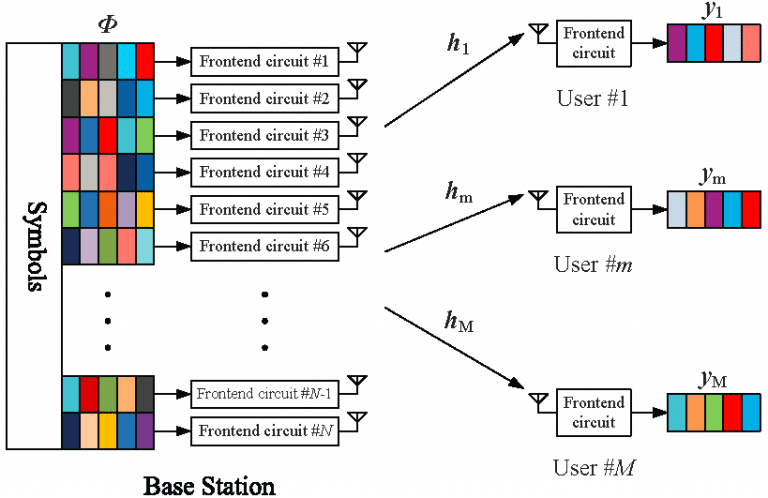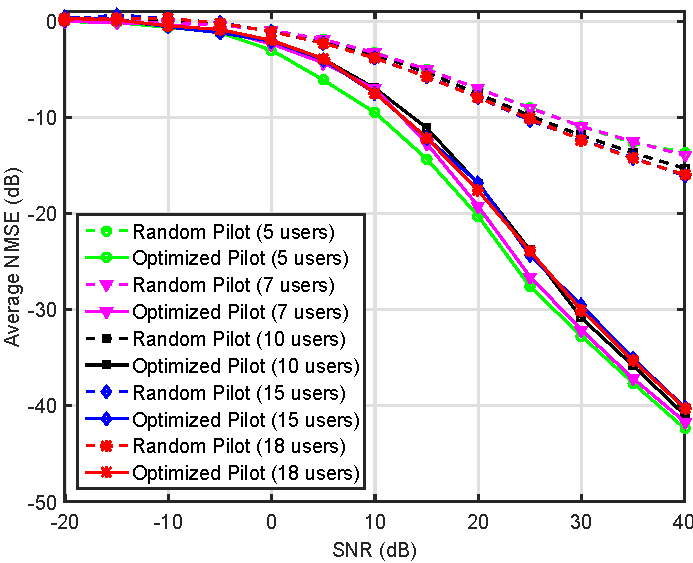Pilot Design in FDD massive MIMO
In 5G wireless communications, massive MIMO (multiple-input multiple-output) is the most promising technique, which employs a very large number of antennas at the base station. Nevertheless, the required pilot overhead for downlink channel estimation becomes unaffordable in frequency division duplex (FDD) massive MIMO systems.
Pilot symbols, a set of symbols known by both transmitter and receiver, are added before the signal symbols, as shown in Fig.1, to sense the unknown channel state information. As such, efficient resource allocation and reliable signal transmission become possible in wireless communication systems.

Unlike the time division duplex (TDD) mode where the downlink channel is simply the transpose of the uplink channel by leveraging the principle of reciprocity, the number of required pilot symbols for downlink channel estimation in the FDD mode should be larger than the number of antennas at the base station. Hence, it is a huge overhead for FDD massive MIMO systems.
We optimize the pilot symbols by maximizing the weighted sum of the Shannon mutual information between the measurements of the users and their corresponding channel vectors. The optimization problem is formulated as
where is an implicit function of pilot symbol matrix
denoting the mutual information between the measurement vector
at the [/latex]m[/latex]-th user and the corresponding channel vector
, and
is the weight assigned to the $m$-th user with
. With custom defined constraints, we provide the best solution to the above optimization problem, i.e., pilot symbols.
Simulation result
We assume that a massive MIMO system equipped with 100 omnidirectional antennas simultaneously services multiple users, which number ranges from 5 to 7, 10, 15 and 18. It is observed from Fig.2 that the optimized pilot performs better than the random pilot, and the performance advantage becomes significant especially for high-gain channels. Although the average channel estimation performance of the optimized pilot degrades as the number of served users increases, the performance loss becomes very tiny when we continue to increase the number of served users.

Product Offerings
VOCAL Technologies offers custom designed, knowledge enhanced compressive sampling solutions in 5G systems. Our custom implementations of such systems are meant to deliver optimum performance for your compressive sampling tasks. Contact us today to discuss your solution!